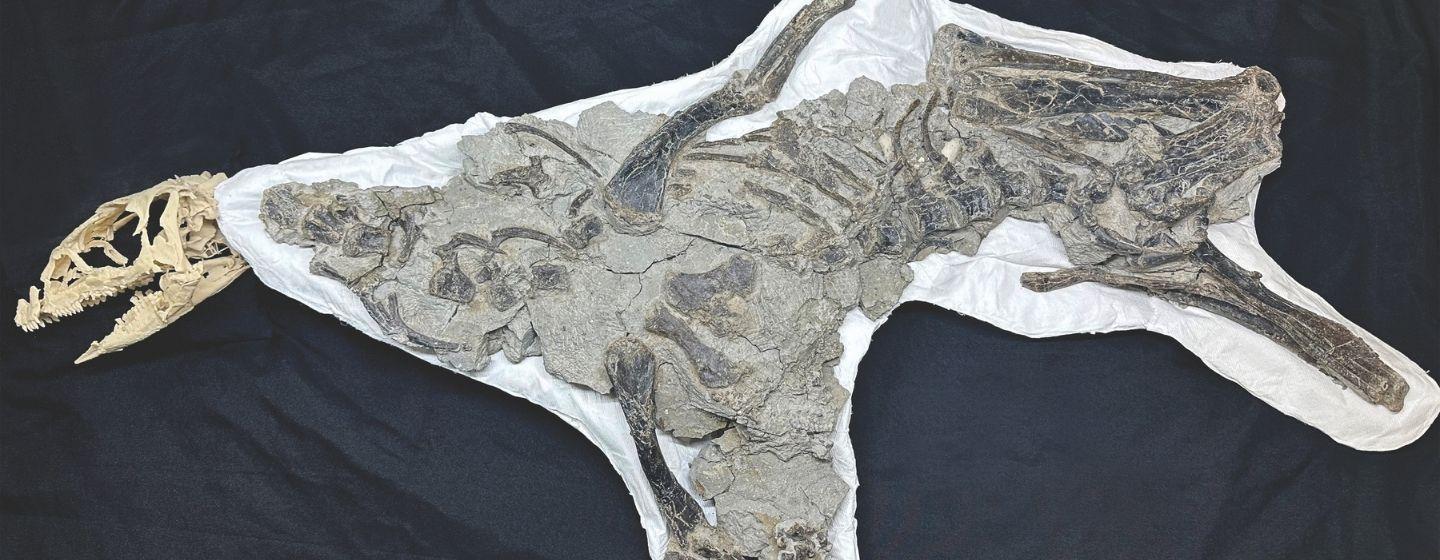A Dinosaur That Lived Partly Underground?


It turns out the age of dinosaurs didn’t take place exclusively above ground, and for Fona herzogae, that apparently was just fine.
The newly discovered dinosaur lived about 99 million years ago in what is now Utah. This time period is called the Cenomanian Age, part of the better-known Cretaceous Period, which ended 66 million years ago.
Back then, the area was a large floodplain, stuck between a large inland ocean to the east and volcanoes and mountains to the west. The long, small-framed, plant-eating dinosaur called this warm, wet, muddy region its home. And researchers believe that its home was both above and below ground.
“If you took, like, a Komodo dragon tail and attached it to the back of an ostrich, that’s kind of what Fona would have looked like,” said researcher Haviv Avrahami in an NPR interview in 2024. A Ph.D. student at NC State, Avrahami was part of the team that discovered the dinosaur.
“It was a small dinosaur. It was about seven feet long, so probably would have been as long as Shaq would have been if he was laying down,” Avrahami added.
Paleontologists from NC State and the NC Museum of Natural Sciences in Raleigh unearthed the fossil and other specimens from the same species in the Cedar Mountain Formation in Utah starting in 2013.
In many ways, Fona was a pretty simple dinosaur.
It didn’t have any horns, crests or body armor. It wasn’t a fierce carnivore.
But it definitely wasn’t boring. As researchers began studying the fossils, they realized the level of preservation, along with some distinguishing features, made this creature unique.
It likely burrowed.
Fona’s fossils have features similar to animals known for digging or burrowing. These include large bicep muscles, strong muscle attachment points on the hips and legs, fused bones along the pelvis that would keep the creature stable while digging and hind limbs proportionally larger than the forelimbs.
But that’s not all. Researchers also looked at where they found the fossils.
“The bias in the fossil record is toward bigger animals, primarily because in floodplain environments … small bones on the surface will often scatter, rot away, or become scavenged before burial and fossilization,” said Avrahami in an NC State press release. “But Fona is often found complete, with many of its bones preserved in the original death pose, chest down with splayed forelimbs, and in exceptionally good condition. If it had already been underground in a burrow before death, it would have made this type of preservation more likely.”
Researchers haven’t found Fona’s underground burrows, but the tunnels and chambers of a close relative, Oryctodromeus,have been found in Idaho and Montana. Those discoveries support the idea that Fonaalso used burrows.
“Fona skeletons are way more common in this area than we would predict for a small animal with fragile bones,” said Lindsay Zanno, associate research professor at NC State and head of paleontology at the NC Museum of Natural Sciences, who also worked on the discovery. “The best explanation for why we find so many of them, and recover them in small bundles of multiple individuals, is that they were living at least part of the time underground. Essentially, Fona did the hard work for us, by burying itself all over this area.”
The genus name Fona comes from the ancestral creation story of the Chamorro people, the Indigenous populations of Guam and the Pacific Mariana Islands.
“I wanted to honor the indigenous mythology of Guam, which is where my Chamorro ancestors are from,” Avrahami explained. “In the myth, Fo’na became part of the land when she died, and from her body sprung forth new life, which to me, ties into fossilization, beauty, and creation.”
The species name herzogae honors Lisa Herzog, the paleontology operations manager at the museum, who discovered one of the most exceptional specimens of several individuals preserved together in what researchers believe was likely a burrow.
The discovery is published in the journal The Anatomical Record.